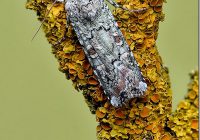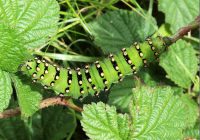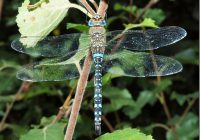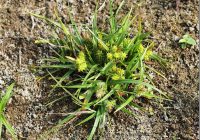Dr Phil Smith’s Wildlife Notes
August 2016
A rather unremarkable month for weather, August had average rainfall and a couple of short warm spells but was largely characterised by cool windy conditions. My frequent visits to the dunes revealed a surprising lack of large insects, especially dragonflies and butterflies. Thus, after a gale the previous day, I called in at our premier dragonfly site in the Birkdale dunes on 8th and was horrified to find not a single dragonfly or damselfly. This seems to have been a widespread phenomenon, local moth trappers also reporting a poor season. Hopefully, it was due to the prevailing weather, rather than to anything more insidious. There were exceptions, of course, Trevor Davenport catching two Portland Moths in his Freshfield Garden. Sefton now seems to be the national headquarters of this beautiful and increasingly rare species. Our Northern Dune Tiger Beetles also seemed to do well and I was delighted to count 102 adults on the developing dune-ridges north of Ainsdale-on-Sea on a particularly warm afternoon.
Another good news story involved the Natterjack Toad. Earlier in the summer, I reported the best breeding season for several years, this being confirmed by the uplifting sight of well-grown baby Natterjacks running about in many places, including Hightown, Devil’s Hole, Lifeboat Road and Birkdale Green Beach. Smooth Newts also seem to have done well, with lots of juveniles under pieces of wood and other debris. I even found a young Great Crested Newt at Ainsdale Local Nature Reserve. However, on the down-side, one of our best newt sites, a scrape in the Ravenmeols Local Nature Reserve, was systematically trashed by seven dogs which were being encouraged repeatedly to dash through the water, smashing down the vegetation. On pointing out to the dog owners that the pond had been created for wildlife in a nature reserve, I was told they were intent on “entertaining their dogs”. Unfortunately, this was by no means an isolated event; it has become necessary to erect expensive and visually-intrusive fences around signed Natterjack scrapes and other dune ponds to protect them from dogs.
Two (fenced) scrapes at Hightown attracted a few dragonflies during the month, including Common Darters and an egg-laying female Emperor on 4th. Nearby, I rescued a huge Emperor Moth caterpillar that was heaving its way across the cycleway, while a male Oak Eggar Moth dashed past at high speed. The brick-rubble beach produced eight large plants of Yellow Horned-poppy with their spectacular arching seed-pods, representing a good recovery after being almost wiped out by the storm-surges a couple of years ago. Unexpectedly, Pete Kinsella spotted a male Common Hawker at one of the Hightown scrapes on 29th, while the same observer found a Black Darter the previous day at Ainsdale. Earlier that week, Trevor Davenport and I went to Highfield Moss near Golborne, specifically to see these two species at their more usual peatland haunt. Also at this Lancashire Wildlife Trust reserve were Brown Hawker, Emperor, Common Darter and Emerald Damselfly, while abundant Meadow Grasshoppers reminded me that I have still not recorded this species anywhere else in the region.
As usual, the glorious sweep of flowering Heather on Freshfield Dune Heath was unmissable. But even better was my second ever Red-legged Shieldbug there on the 23rd, together with a Painted Lady butterfly and the first Migrant Hawkers of the year. More of the latter and a Ruddy Darter were at Mere Sands Wood on the last day of the month.
Much of my time during the month was spent studying a rather obscure and uncommon plant, the Small-fruited Yellow-sedge, which is confined to the Sefton dunes in the vice-county. It is a good indicator of young slack vegetation and so is often found around recently excavated Natterjack Toad scrapes or in places where there has been some disturbance. The best site is the Devil’s Hole blow-out at Ravenmeols, where I estimated about 4500 plants. I also found several small colonies associated with wheel ruts caused by illegal off-road vehicle driving a couple of years ago in the Birkdale frontal slacks. Like many other dune specialists, this plant is vulnerable to overgrowth of competitive vegetation. However, research elsewhere has shown that its seeds can survive in the soil for many decades before germinating when conditions allow.
Although I had a Kingfisher at Ainsdale on 3rd, my most notable bird sighting of the month was five Arctic Skuas harassing a tern roost at Cabin Hill shore on 6th. The Skuas had been attracted inshore by flocks of especially Sandwich Terns that gather in Liverpool Bay before their autumn migration to Africa. This month, the largest count by The Biodiverse Society volunteers was 1260 at Ainsdale on 16th, exceeding the previous record of 800 in July.
Finally, I have to report that the Essex Skipper found at Ainsdale last month has proved, upon further examination, to be just a Small Skipper after all. Disappointing; but surely only delaying its inevitable colonisation by a few years.




